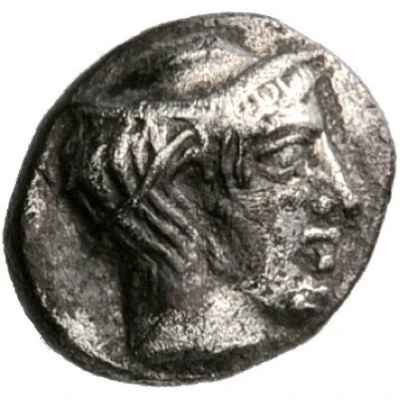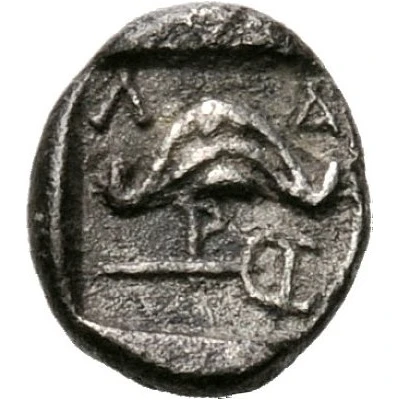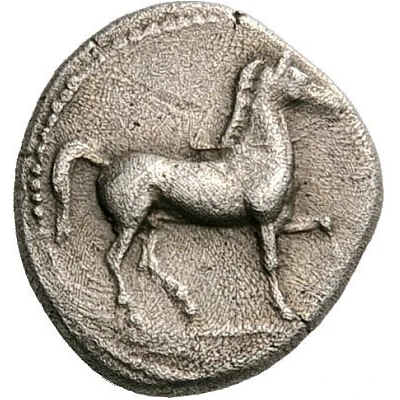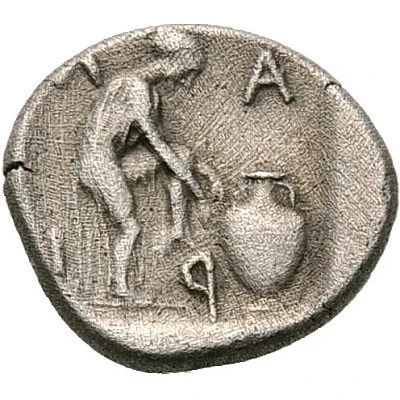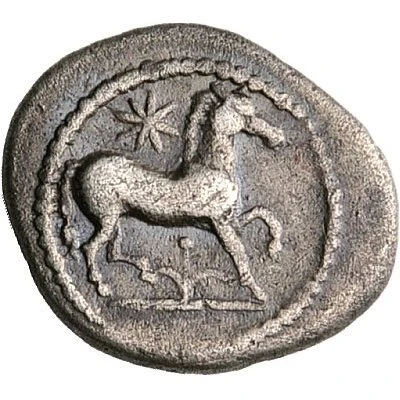
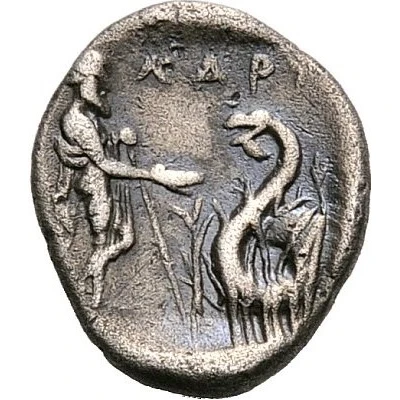

© Nomos AG
Obol 440 BC - 400 BC
| Silver | - | - |
| Issuer | Larissa (Thessaly) |
|---|---|
| Type | Standard circulation coin |
| Years | 440 BC - 400 BC |
| Value | Obol (⅙) |
| Currency | Drachm |
| Composition | Silver |
| Shape | Round (irregular) |
| Technique | Hammered, Incuse |
| Demonetized | Yes |
| Updated | 2024-10-10 |
| Numista | N#170980 |
|---|---|
| Rarity index | 100% |
Reverse
On left, Asklepios standing right, bearded and wearing long robes, leaning on long staff held in his left hand and, from a phiale held in his right hand, feeding a snake, on the right, coiling to left within a bank of reeds. All within a shallow incuse square
Script: Greek
Lettering: ΛΑΡΙ
Comment
Herrmann F/G IIIβ VIII; Traité IV 691 and pl. CCXCVII, 25.
Interesting fact
The Obol coin was used as a form of currency in ancient Greece, specifically in the city-state of Larissa (Thessaly) during the 5th century BC. The coin features an image of a horse on one side and a helmet on the other, symbolizing the city's wealth and military power. The use of silver in the coin's production also signified the value and importance of the currency in the ancient Greek economy.
